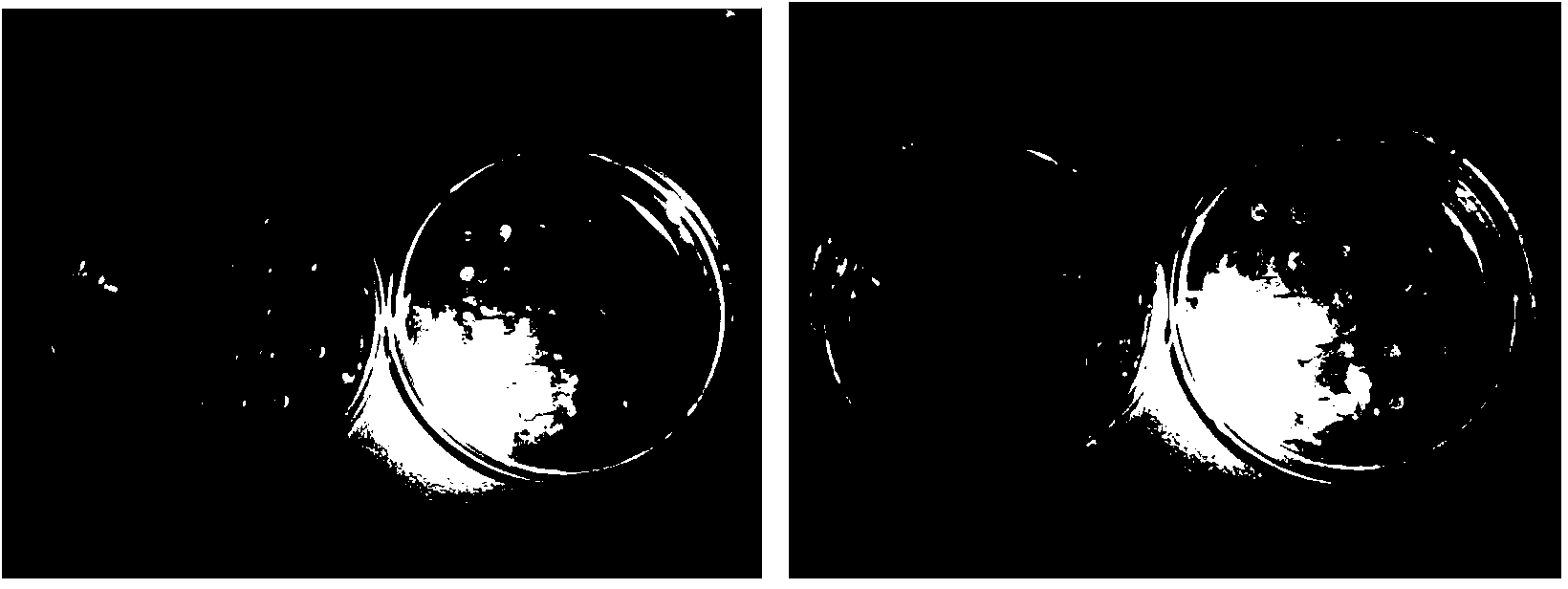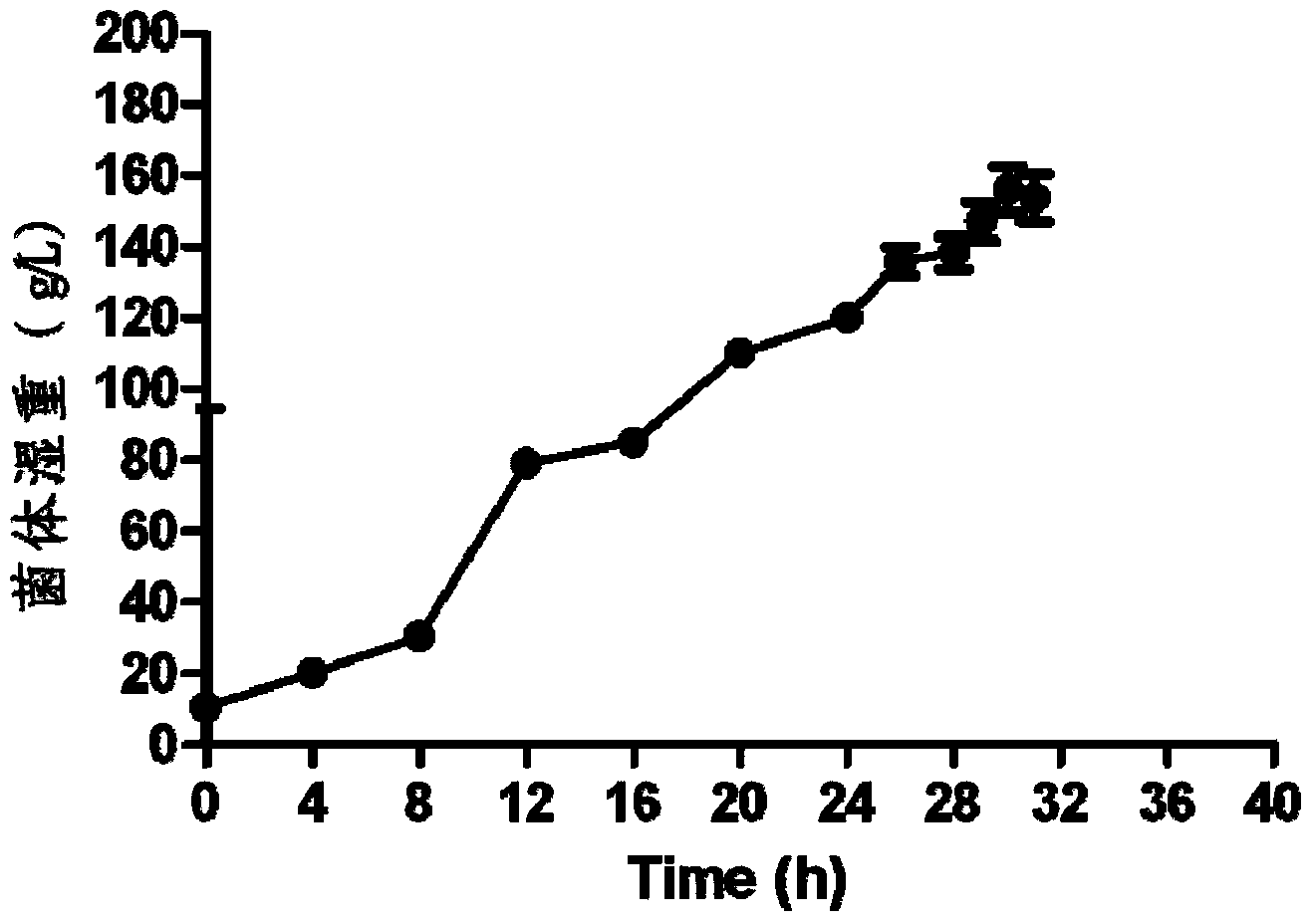Selenium-enriched yeast with high biomass, and additive and premix containing the same
A selenium-enriched yeast, high-biomass technology, applied in microorganism-based methods, microbial determination/inspection, biochemical equipment and methods, etc., can solve the problems of difficult absorption, inorganic selenium toxicity, unsuitability for humans and animals, etc. To achieve the effect of simple production method, easy promotion, and easy production and application
- Summary
- Abstract
- Description
- Claims
- Application Information
AI Technical Summary
Problems solved by technology
Method used
Image
Examples
Embodiment 1
[0028] Embodiment 1 Low-concentration sodium selenite plate screening
[0029] In the present invention, the determination of the tolerance of yeast to sodium selenite is used as a screening method, and the tolerance (50, 100, 300, 500 μg / mL) of yeast strains preserved in our laboratory to selenium is studied. The results showed that the tolerance of different yeast strains to sodium selenite was quite different. Use a sterilized toothpick to spot candidate yeast strains on the inorganic selenium plates containing 50, 100, 300, and 500 μg / mL respectively, and after standing at 30°C for 48 hours, select the yeast strains that grow better on the plates containing inorganic selenium. Good 8 strains (Saccharomyces cerevisiae S4, Saccharomyces cerevisiae S3, Saccharomyces cerevisiae S2, Saccharomyces boulardii YBN-3, Saccharomyces boulardii YBN-2, Saccharomyces boulardii YBN-1, Candida alkanogenes C, and Lasseria B) for further domestication studies ( figure 1 ).
Embodiment 2
[0030] Example 2 High-concentration sodium selenite plate acclimatization
[0031] The 8 screened strains were further acclimatized on high-concentration sodium selenite (1000, 2000, 3000 μg / mL) plates. On the plate containing 1000, 2000, 3000 μg / mL sodium selenite respectively, spot the yeasts screened in Example 1 with a sterilized toothpick. Saccharomyces cerevisiae boulardii YBN-2, which grew well on the sodium selenite plate, was used as a production strain for the next experiment ( figure 2 ).
[0032] The selected Saccharomyces cerevisiae ( Saccharomyces cerevisiae ) subspecies of Saccharomyces boulardii named YBN-2, which was preserved on November 8, 2013 in the General Microbiology Center of China Committee for the Collection of Microbial Cultures, referred to as CGMCC, address: No. 3, Courtyard No. 1, Beichen West Road, Chaoyang District, Beijing Institute of Microbiology, Chinese Academy of Sciences, the deposit number is CGMCC No.8447.
Embodiment 3
[0033] Embodiment 3 Selenium-enriched yeast fermentation condition optimization
[0034] 1. The influence of different culture media
[0035] Saccharomyces boulardii strains were fermented and cultured with YPD and molasses medium respectively, the amount of inorganic selenium added was 30 μg / mL, and the liquid volume was 50 and 100 mL. The results are shown in Table 1. Different media had certain effects on the biomass and selenium content of Saccharomyces cerevisiae boulardii. It can be seen from Table 1 that the biomass and organic selenium content of the strains cultured in 50 and 100mL molasses fermentation medium were higher than those in YEPD medium. And compared with the YEPD medium, the molasses medium is easy to preserve, low in cost, easy to use, and suitable for industrial production. Therefore, molasses was selected as the carbon source for the next step of fermentation condition optimization.
[0036] Table 1 Effects of different fermentation media on the bioma...
PUM
 Login to View More
Login to View More Abstract
Description
Claims
Application Information
 Login to View More
Login to View More - R&D
- Intellectual Property
- Life Sciences
- Materials
- Tech Scout
- Unparalleled Data Quality
- Higher Quality Content
- 60% Fewer Hallucinations
Browse by: Latest US Patents, China's latest patents, Technical Efficacy Thesaurus, Application Domain, Technology Topic, Popular Technical Reports.
© 2025 PatSnap. All rights reserved.Legal|Privacy policy|Modern Slavery Act Transparency Statement|Sitemap|About US| Contact US: help@patsnap.com



